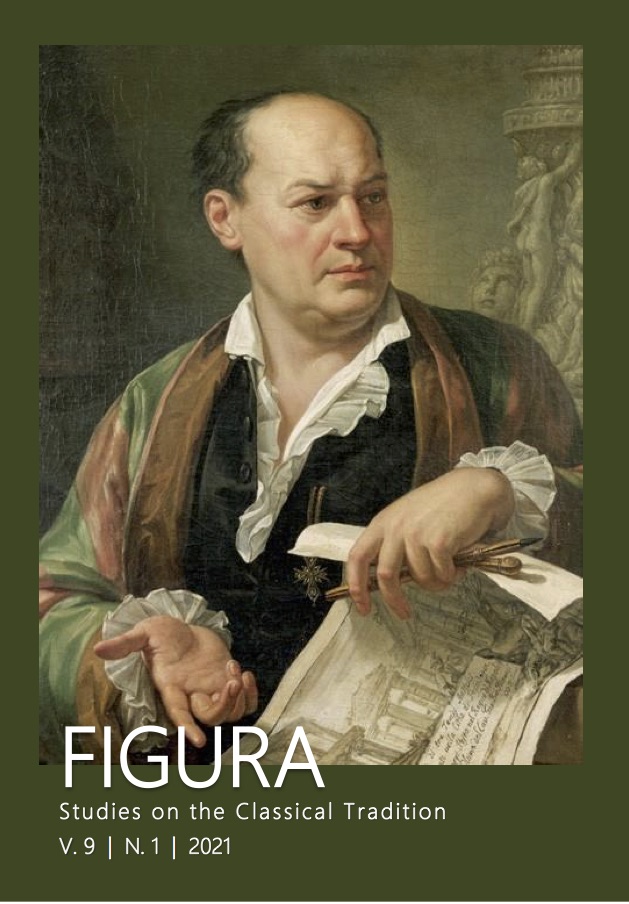Abstract
Brilliant artist, who contributed so much to spreading out the myth and fascination of Rome in Europe, Giambattista Piranesi was a very unique architect and engraver, one of the greatest in the 18th century, passionate about archeology and Roman architecture, celebrated in his work as a theoretician and artist. The Biblioteca Nacional of Rio de Janeiro has a vast collection of his etchings, rich with approximately 3 thousand prints, admired internationally and scarcely known in Brazil. Unfortunately, due to the sanitary crisis and the consequent closure of public cultural spaces in 2020, the prints, which had momentarily left the cabinets and boxes, to commemorate the versatile artist's 300 years, returned to their bins without the deserved cellebrations and catalogue. This article aims to outline the general profile of the Piranesi collection present in the Biblioteca Nacional, inserted in the history of its arrival in Brazil, brought by the Portuguese Royal Family when the Court was transferred to Rio de Janeiro, in November 1807, while scapping from Napoleon.
References
BELOZERSKAYA M., Medusa's Gaze: The Extraordinary Journey of the Tazza Farnese, Oxford University Press, 2012
BEVILACQUA M. The Young Piranesi: The itineraries of his formation In: The Serpent and the Stylus. ed. Academia Americana a Roma, Supplements no.4, 2007
BEVILACQUA M. Piranesi. I Taccuini di Modena, ed.Artemide, Roma, 2008
BEVILACQUA M. Giovanni Battista Piranesi In: Dizionario Biografico degli autori, vol. 84, 2015
CONNELL D. Recently Identified at Burton Hall. The collection of William Dugood FRS – jeweller, scientist, freemason and spy. in: Journal of the History of collections vol.21, n.1 (2009)
DELAFORCE A. Giovanni V di Braganza e le relazioni artistiche del Portogallo con Roma. In: Giovanni V di Portogallo (1707-1750) e la cultura Romana del suo tempo, ed. Argos, Roma, 1995,
FOCILLON H. Giovanni Battista Piranesi (1720-1778), Paris, 1918; IDEM, Giovanni Battista Piranesi, essai de catalogue raisoneé de son oeuvre, Paris, 1918.
FONSECA DA CUNHA L. Real Biblioteca. Apontamentos sobre seu acervo in: D. João VI. Um Rei Aclamado na América, Arquivo Nacional, Rio de janeiro, 2000
IDEM, Subsídios para a história da Biblioteca Nacional. In: Anais da Biblioteca Nacional, Rio de Janeiro, 1981, v.101, p.123-146
GONÇALVES PEREIRA e PIRES C. O poder da Magnetite, Museu de Ciência da Universidade de Coimbra, available in <http://www.rsehn.es/cont/publis/boletines/406.pdf> access in 6/09/2018.
GRASSI L. e PEPE M. Cultura artística nella prima metà del settecento a Roma, in: Giovanni V del Portogallo (1707-1750) e la cultura romana del suo tempo. Àrgos edizioni, Roma, 1995
HORNBY C. William Dugood and William Kent: a story of politics, freemasonry and art deals in 18th century Rome. British School of Rome, conferencia on-line, access in 3/12/ 2020. Available in https://www.youtube.com/watch?v=UChYqo72sGQ
MARIANI G. Giambattista Piranesi, Matrici incise (1756-1757), ed. Mazzotta, Milano, 2014
MARIANI G. Gli anni sessenta: l’opera di Piranesi come specchio della riflessione teórica sull’architettura romana all’interno dela grande officina di Palazzo Tomati In: Matrici incise 1761-1765, Roma, 2017,
NEVOLA F. GB Piranesi. I Grotteschi. Gli anni giovanili (1720-1750). Ed. Ugo Bozzi, Roma, 2010
ROSENFELD M.N. Piranesi’s Grotteschi: A Visual Expression of the Literary Aims of the Accademia delgi Arcadi in NEVOLA F. (org) Giovanni Batista Piranesi, predecessori, contemporanei e successori, ed.Quasar, Roma 2016
SCALONI G. I carceri In: MARIANI G. (org.), Matrici Incise 1743-53. Ed. Mazzota, Roma, 2010,
SCHWARCZ L.M. A longa Viagem da Biblioteca dos Reis. Do terremoto de Lisboa à Independência do Brasil, ed. Cia das Letras, São Paulo, 2008
WINSTON-ELY J. Piranesi and the British architects in Rome. In: Matrici Incise 1761-1765, Editalia, Roma, 2017
IDEM, Piranesi, Paestum & Soane, ed.Prestel Verlag, 2013
YOURCENAR M. Le cerveu noir de Piranesi in: Sous bénéfice d’inventaire, éditions Gallimard, 1978

This work is licensed under a Creative Commons Attribution-NoDerivatives 4.0 International License.
Copyright (c) 2021 Elisa Byington


